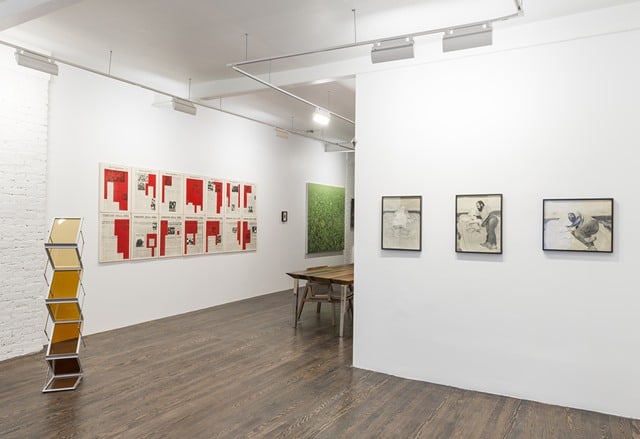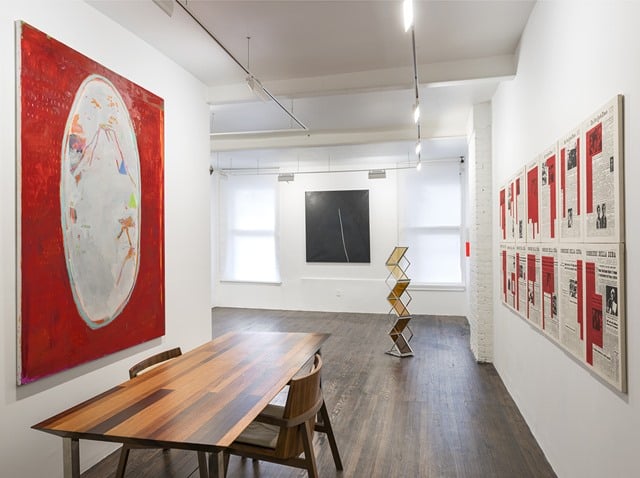Art & Exhibitions
Brazil’s Galeria Nara Roesler Comes to New York’s Flower District
It's the latest gallery to set up shop east of Chelsea.

Photo: courtesy Galeria Nara Roesler.
It's the latest gallery to set up shop east of Chelsea.

Brian Boucher

Veteran Brazil gallery Nara Roesler is expanding into the crowded New York art market, with a new viewing space now open in the Flower District.
Sitting in the 950-square-foot room in an 1870 building on West 28th Street, artistic director Alexandra Garcia Waldman described the gallery’s plans for the new venue, which is open by appointment and has been receiving visitors since December. She talked to artnet News among works by gallery artists such as Bruno Dunley, Lucia Koch, Artur Lescher, and Marco Maggi.
The New York space is the latest expansion by a gallery that’s been in business for twenty-six years in São Paulo and opened a new venue in Rio de Janeiro in 2014. But now it was time to branch out further, Waldman said.
“Brazil is like the US in one way,” she said, pointing out that it’s practically “a continent unto itself, with its own market, its own criticism, its own institutions.” Its protectionist economy, too, has discouraged collecting artists from outside the country. So the gallery hadn’t seen a need to look outward, she conceded, and indeed about seventy percent of its buyers are Brazilian.
“But I’m now obsessed with taking the Brazilians outside of Brazil,” she said. She sat under a large Antonio Dias work based on the covers of various newspapers printed on canvas, sections overpainted with geometric red patches.

The viewing room, with works by Lucia Koch, Antonio Dias, Melanie Smith, and Paulo Bruscky.
The gallery’s staff of thirty keeps up a brisk pace of eight art fairs a year, from Art Basel Hong Kong and the Armory Show to Frieze Masters and, on its home turf, Art Rio. Waldman, who grew up in New York and spent ten years in Mexico City before joining the gallery, had just touched down from visiting several European countries and would take off for art fairs in Mexico City the next day.
The new viewing room is not far from a few other dealers, namely former Chelsea resident Casey Kaplan’s new venue; Planthouse Gallery, which opened in 2013; and a space shared by dealers Leon Tovar and Cristina Grajales. Other dealers have been scouting the neighborhood as well, driven partly by rising rents in Chelsea. For now, Nara Roesler’s other near neighbors include retailers hawking costume jewelry, lingerie, sunglasses, and hair extensions.
Nara Roesler shows more than forty artists, many of them Latin American practitioners of various generations, including those born in the 1920s and ‘30s, like Hélio Oiticica and Julio Le Parc; Paulo Bruscky and Antonio Dias, born in the ‘40s; and children of the ‘60s and ‘70s, such as Vik Muniz, Virginia de Medeiros, and Cao Guimarães. Nara Roesler also works with artists hailing from other parts of the globe, representing Daniel Buren and Isaac Julien in Brazil.
Among the upcoming exhibitions at the Flower District venue are shows by Guimarães (opening March 31), Abraham Palatnik (in May 2016, coinciding with a presentation of his work at Frieze New York), and Marcos Chaves (opening September 3).

The viewing room, with works by Bruno Dunley, Tomie Ohtake, Lucia Koch, and Antonio Dias.
Photo: courtesy Galeria Nara Roesler.
Waldman made no secret of the fact that the Brazilian art market, like the art market globally, is experiencing swift, and erratic, changes. The larger economic and political situation is turbulent, too, she pointed out, with the country undergoing corruption scandals and corporate bankruptcies to rival those of the US in 2007–08.
Goldman Sachs chief Latin American economist Alberto Ramos has an even harsher assessment. “Brazil is a mess,” he said, according to Bloomberg. “Number 10 used to mean Pele. Now it’s inflation rate, unemployment rate, and the popularity rate of the president.”
So the gallery’s turn from inward-looking to outward-facing is partly a move born of necessity, and, Waldman said, the still-bustling New York art market is essential to that plan. Describing the way the gallery manages its various artists, she noted that cultivating different artists requires various strategies.
“Everyone is their own case, and everyone needs what they need,” she said. “But everyone needs New York.”